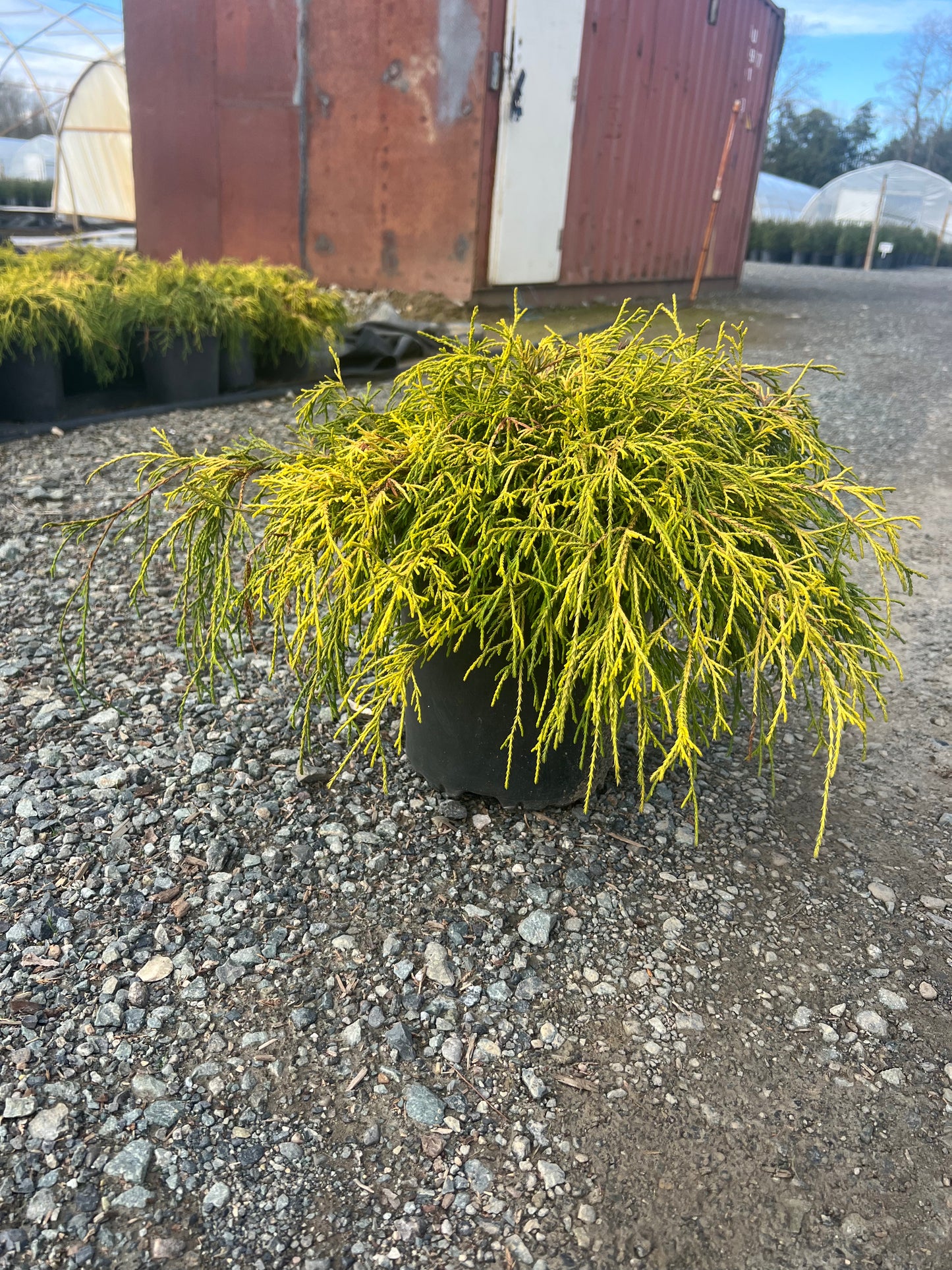|
Growth Rate
|
- Speed: Slow to moderate grower.
- Mature Growth: Reaches 3-5 feet in height and 4-6 feet in width, developing a naturally mounded and spreading habit.
|
|
Colorful leaves
|
|
|
Flowering
|
No |
|
Disease resistant
|
Yes |
|
Cold Tolerant
|
No |
|
Heat Tolerant
|
No |
|
Drought Tolerant
|
No |
|
Deer Resistant
|
Yes |
|
Edible
|
No |
|
Wildlife Attraction
|
- Attracts: Provides shelter for small birds and wildlife due to its dense, feathery foliage. Not a significant food source for wildlife but offers excellent cover.
- Wildlife Resistant: Deer and rabbits tend to avoid this plant due to its aromatic foliage.
|
|
Self-pollinating
|
|
|
Seasonality
|
- Foliage Season: Year-round interest with vibrant golden-yellow foliage.
- Flowering Season: Chamaecyparis pisifera 'Sungold' is grown for its foliage and texture, not for flowers.
- Hardiness Zones: USDA Zones 4-8
|
|
Ideal For
|
- Rock gardens
- Borders
- Foundation plantings
- Container gardens
- Accent planting
|
|
Leaf Description
|
- Color: Bright golden-yellow foliage, which holds its color throughout the year, even in winter. The interior foliage may appear greener.
- Form: Thread-like, wispy, and soft to the touch. The branches have a graceful, cascading habit.
- Winter Appearance: Retains its golden-yellow hue year-round, providing winter interest.
|
|
Planting Instructions
|
- Planting Time: Best planted in early spring or fall, although container-grown plants can be planted anytime during the growing season.
- Soil Requirements: Prefers moist, well-drained soil. Thrives in slightly acidic to neutral soil (pH 5.5-7.0).
- Planting Depth: Plant at the same depth as it was in its container. Be sure the root flare is at or just above the soil surface.
- Spacing: Space plants 3-6 feet apart to allow for their natural spread.
|
|
Pruning & Maintenance
|
- Timing: Prune in late winter or early spring if shaping is desired.
- Method: Light pruning to maintain shape is all that is necessary. Remove any dead, damaged, or unruly branches. Avoid over-pruning, as this can ruin the plant's graceful, cascading form.
|
|
Water Needs
|
- Watering Frequency: Water regularly during the first growing season to establish a deep root system. Once established, the plant can tolerate short periods of drought but prefers consistent moisture.
- Soil Moisture: Prefers evenly moist but well-drained soil. Avoid letting the soil dry out completely, especially in hot weather.
|
|
Light Needs
|
- Prefers full sun to partial shade. Full sun is ideal for maintaining the golden color, though it can tolerate some afternoon shade in hotter climates.
|
|
Harvesting
|
While not a crop plant, ‘Sungold’ can be harvested for decorative purposes |
|
Fertilizing
|
- Fertilization Time: Apply a balanced, slow-release fertilizer in early spring before new growth begins.
- Fertilizer Type: Use a balanced fertilizer (e.g., 10-10-10) or organic compost around the base for steady growth.
|
|
Additional Care Tips
|
- Mulching: Apply a 2-3 inch layer of mulch around the base to retain moisture and keep the roots cool. Keep mulch away from the trunk to prevent rot.
- Drought Tolerance: While Sungold is somewhat drought-tolerant once established, it prefers regular watering in dry periods, especially during the summer.
- Pests and Diseases: Generally pest and disease resistant, though it may be susceptible to root rot in poorly drained soils. Avoid overhead watering to reduce the risk of fungal issues.
|
|
Pollination
|
- This plant is not grown for flowers or fruit and does not have significant pollination requirements.
|
|
Companion Plants
|
- Japanese Maple (Acer palmatum)
- Heuchera (Coral Bells)
- Boxwood
- Ornamental Grasses
|






